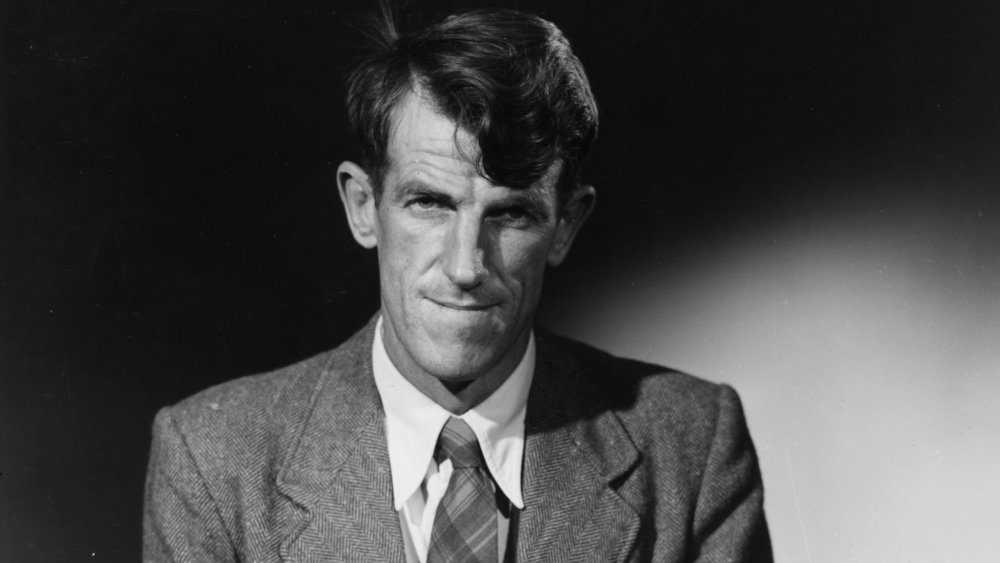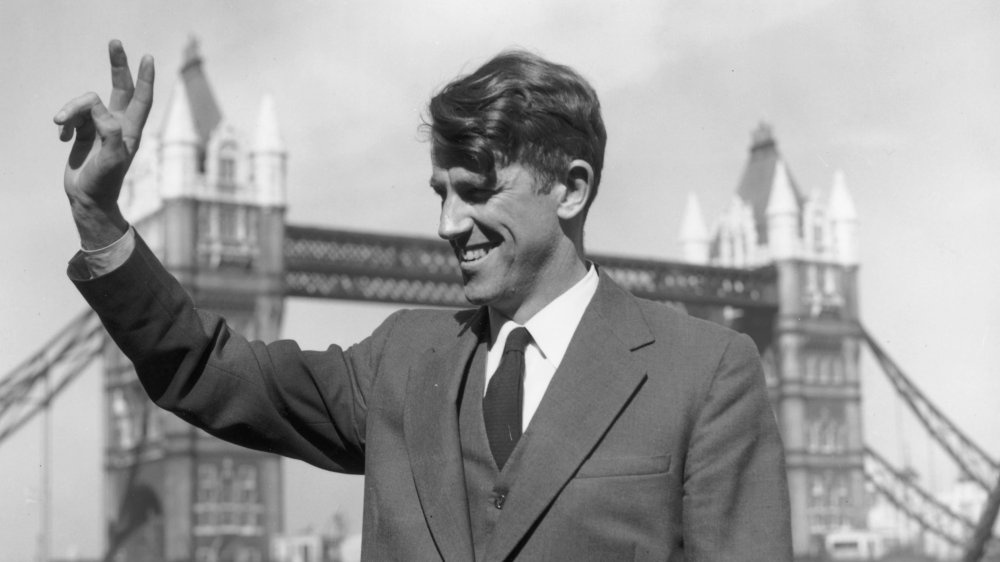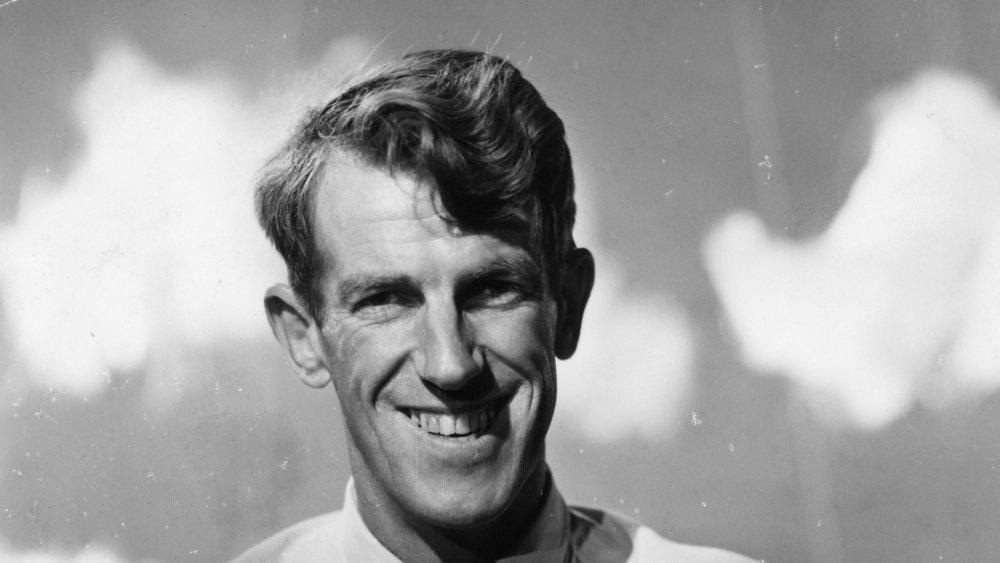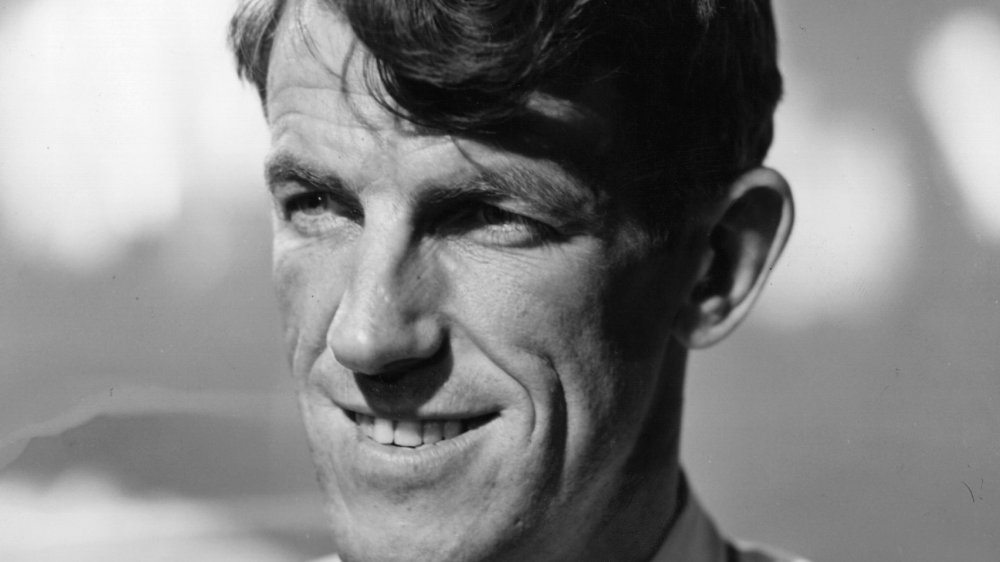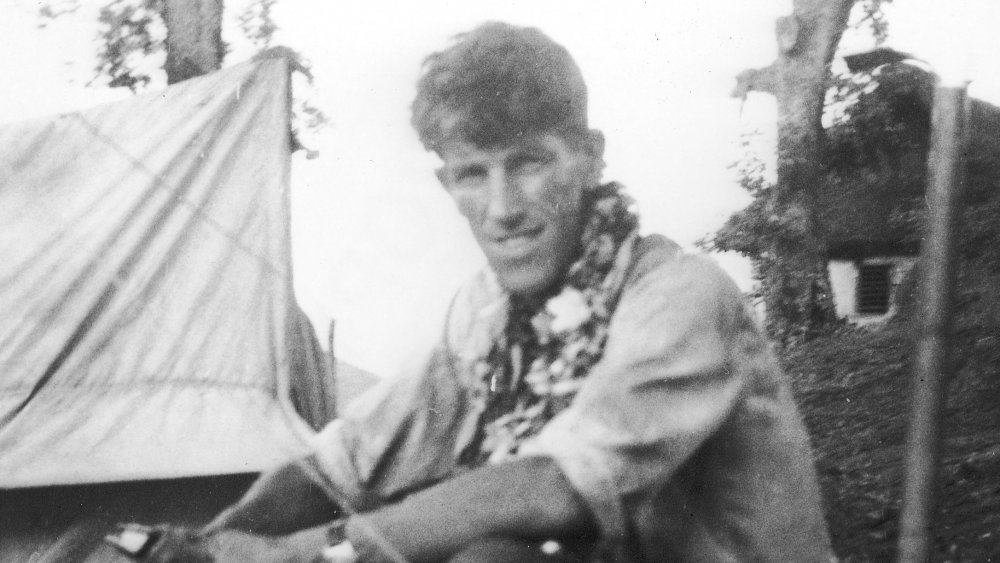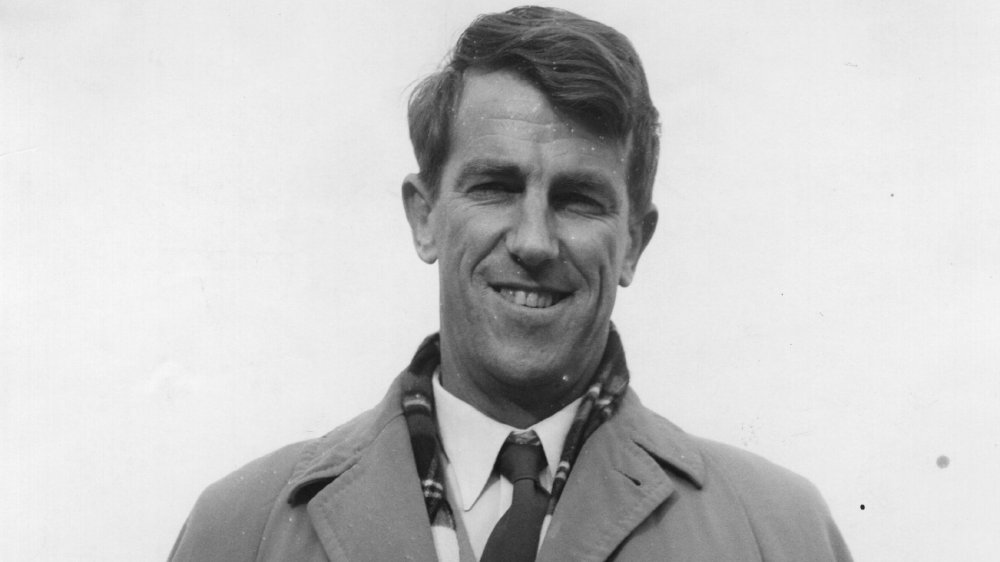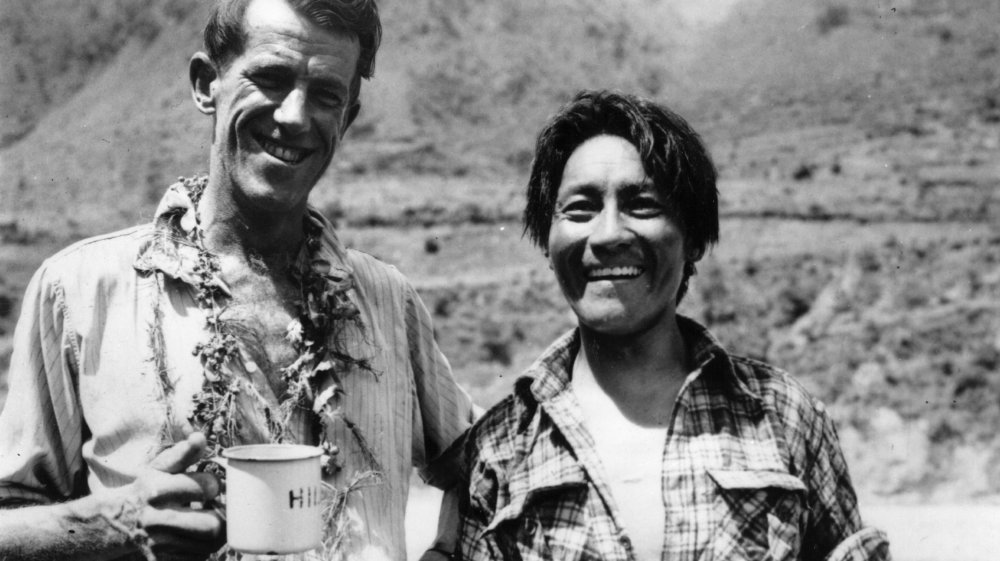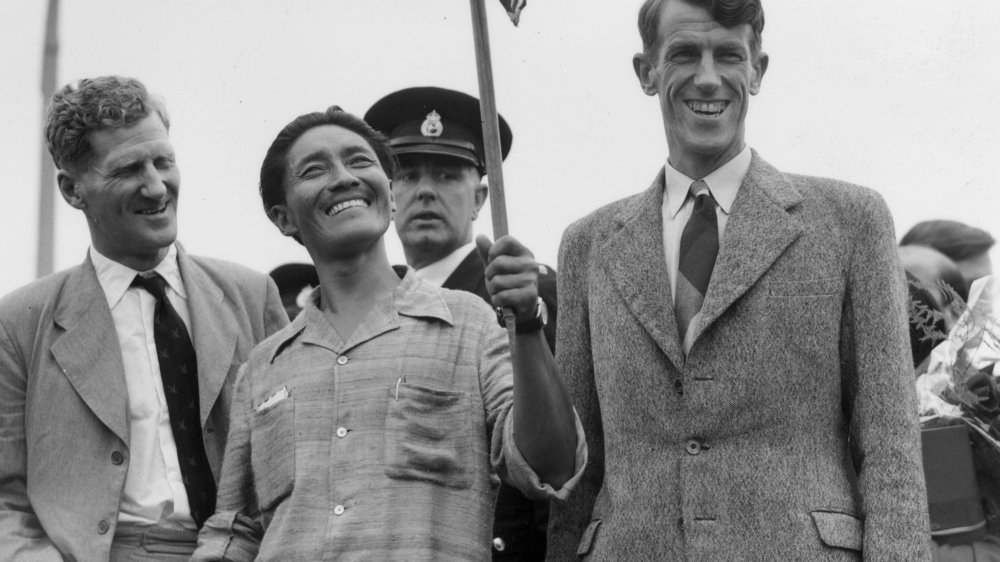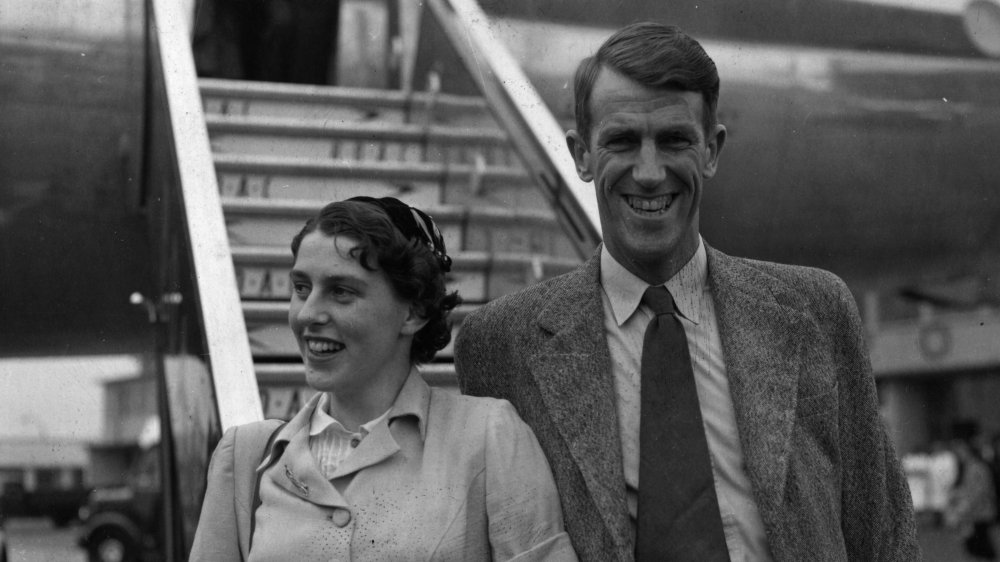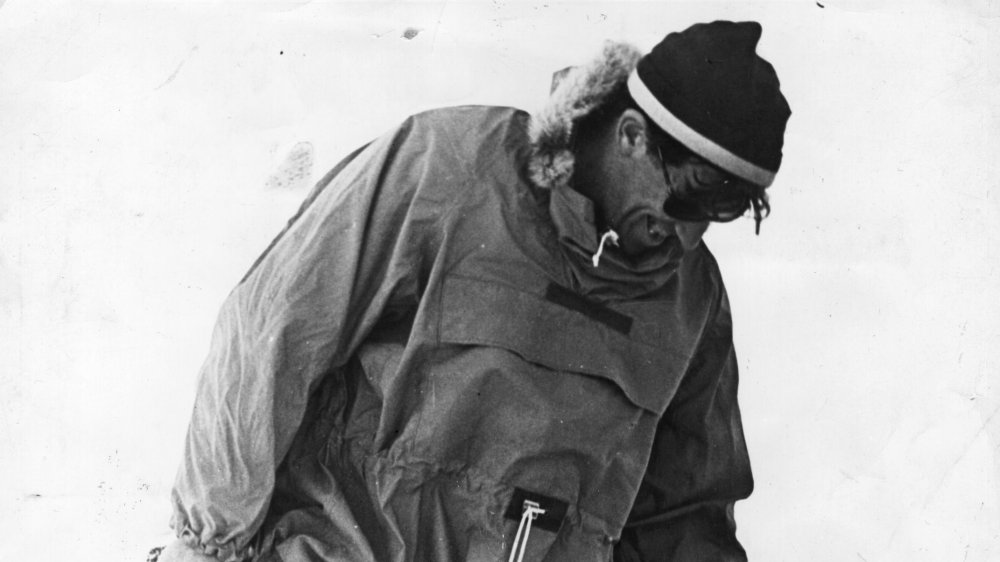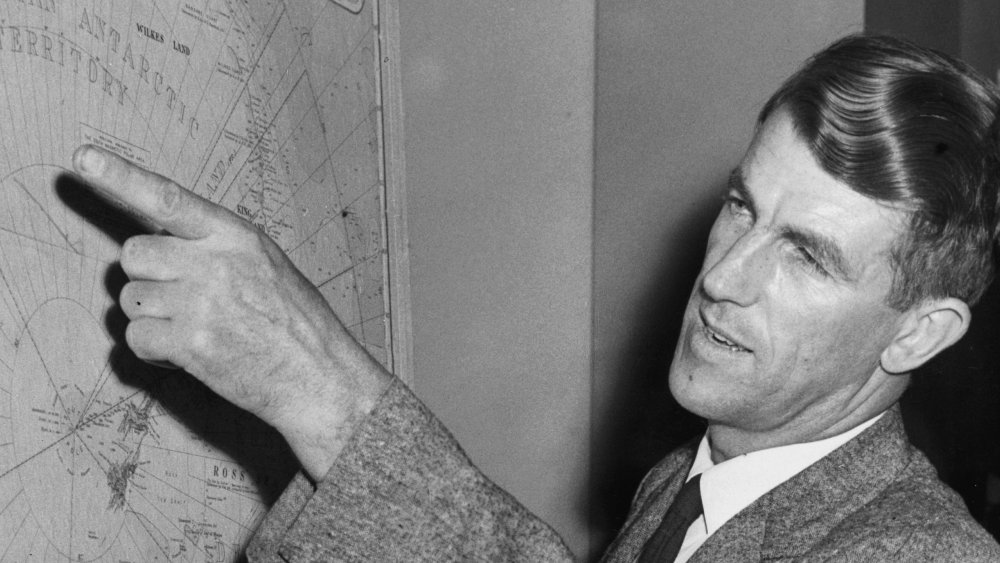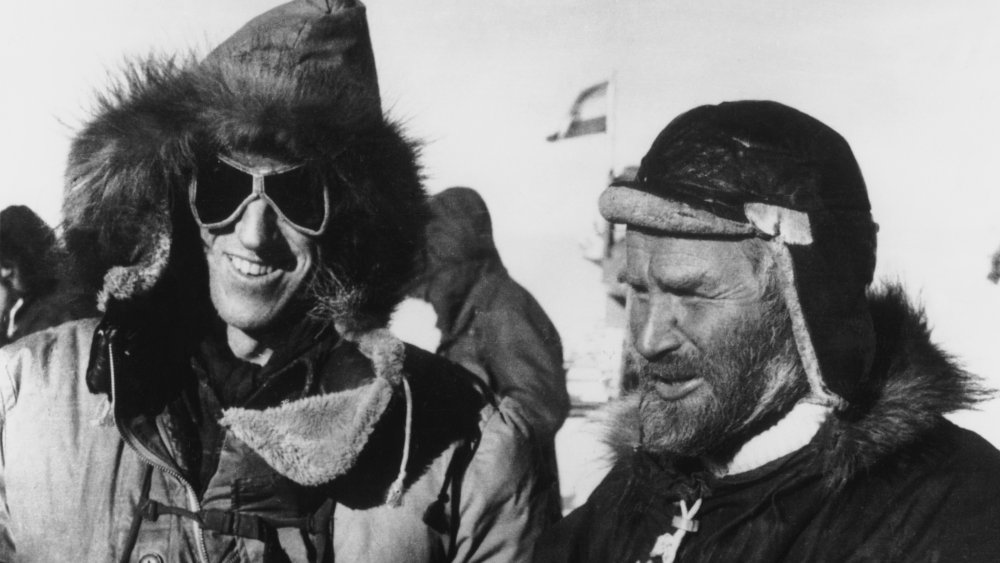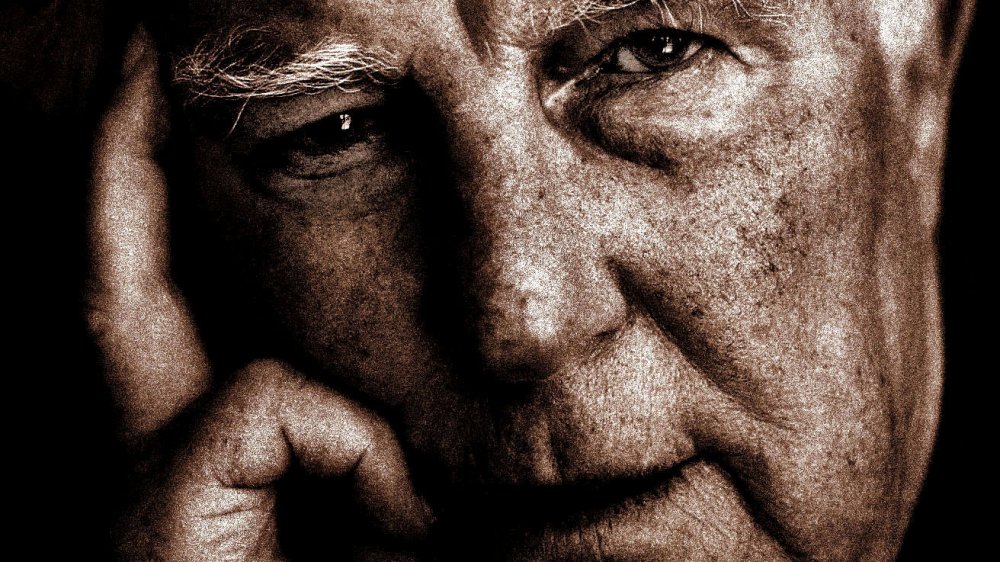Inside Sir Edmund Hillary's Fascinating Life Of Adventure
Sir Edmund Percival Hillary, the mountaineer from New Zealand who conquered Everest for the first time with Nepali climber Tenzing Norgay, created history with the unparalleled feat in 1953. Despite the achievement, Edmund was low-key and mostly spent his life focusing on pursuing his passion for climbing and helping others along the way. He was especially instrumental in spearheading philanthropic activities for the Sherpa community, the native Nepali climbers known for scaling the Himalayas with panache.
Edmund's work didn't go unnoticed, and he received several honors during his lifetime, including being knighted by the queen of England after his Everest climb. There are plenty of things that aren't very well-known about the man who was once a beekeeper from New Zealand and went on to climb one of the most unforgiving peaks in the world. Here are snippets from the adventure-filled life of one of the most fascinating climbers in history.
Edmund Hillary was a beekeeper
Edmund Hillary was born in July 1919 in Auckland, New Zealand. His mom, Gertrude Hillary, was a teacher, while his dad, Percival Hillary, managed a publishing career and also had a job as a beekeeper. The family lived in South Auckland for a few years in the town of Tuakau, surrounded by nature. Interestingly, per NZ Herald, Hillary's grandparents were actually immigrants from Yorkshire who made a new life for themselves in New Zealand.
After school, Edmund opted to turn to beekeeping in order to work during the summer and use the winter months to scale mountains. Additionally, he was a part of his country's air force in World War II. He was always an adventurer and longed to explore the world as a child. Working as a beekeeper gave him a chance to use the extra time he had to set off on climbing adventures in New Zealand and, eventually, in different parts of the world.
Edmund Hillary was small and shy as a child
Edmund Hillary was a shy and tiny kid who often daydreamed about the world, voraciously reading books from prolific writers such as Edgar Rice Burroughs, Rider Haggard, and Zane Grey. He went to Tuakau Primary School, followed by Auckland Grammar, and spent a few years surviving two-hour-long commutes to school. He took up boxing, which gave him a major confidence boost and helped him to push himself further.
As a 16-year-old, Edmund went on a hike to Mount Ruapehu, an active volcano in New Zealand. The school trip was life-changing for the teenager. As ESPN notes, the hike helped him to realize he had great endurance, a revelation which paved the way for more adventures scaling peaks. After school, he decided to study science and math at Auckland University College but wasn't particularly fascinated by academia. He preferred tramping and was unable to hold himself back, going off to explore as soon as he could.
Edmund Hillary's first memorable climb
Edmund Hillary started climbing whenever he could and decided to attempt his first major ascent when he was 20 years old. His goal was to scale Mount Oliver in the Southern Alps in New Zealand, which he'd prepared for by going on easier climbs during his free time, and he succeeded.
He was also into skiing and spent most of his weekends being active. He later reflected on his life of climbing and said that it wasn't a conscious decision to follow this path. As he related to Time, "I didn't visualize myself becoming a renowned mountaineer. It happened gradually. Very few [people] suddenly decide they're going to be a world champion at something." Despite Edmund not specifically planning to become a world-famous mountain climber in his early years, his aptitude for the sport was indisputable, and his remarkable skills became increasingly evident over the years as he scaled ever more difficult peaks before finally conquering Mount Everest.
Edmund's Hillary skill was undeniable
By 1950, Edmund Hillary was quite comfortable on climbing expeditions, and he'd already explored the Swiss and Austrian Alps. After a year, he decided to join a New Zealand expedition that was making its way to the Himalayas. According to Time, Edmund liked the Himalayas but didn't think they were mightier than the mountains he'd already conquered back home. "I was very impressed," he later said of the time he first glimpsed the mountains in the Himalayas. "But the peaks didn't look all that different from what I'd been climbing in the Southern Alps [in New Zealand]."
Edmund and the rest of the team performed well and managed to cross unchartered territory despite insufficient funds. Edmund's climbing prowess didn't go unnoticed. Time states that he came to be known as "a talented and aggressive climber." "I don't believe I was unpleasantly aggressive," Hillary later explained. "But I think I rather enjoyed grinding my companions into the ground on a big hill."
Edmund Hillary was at his fittest when he climbed Everest
Because of his mountaineering background in New Zealand and his experience scaling unforgiving peaks, Edmund Hillary was well-prepared by the time he decided to scale Mount Everest. It also helped that by then, he'd been to the Himalayas a few times. When the expedition was announced, Edmund was a solid choice for a slot. George Band, a mountaineer who was on the team, told National Geographic's David Roberts that Edmund had what it took to participate. "It was his fourth Himalayan expedition in just over two years and he was at the peak of fitness," Band said.
Edmund had been a part of British expeditions in Nepal in the early 1950s and was strong."When you're younger you're probably faster, but when you're older you have incredible endurance," he told Sports Illustrated (via Time) many years after his Everest climb. "You also have a good deal more experience — especially of being uncomfortable and miserable, whereas the younger person who is all go, go, really hasn't been all that miserable in his life. When you're climbing at high altitudes, life can get pretty miserable. An older person is able to put up with this more easily."
Edmund Hillary got along well with Tenzing Norgay
When the teams for the legendary Everest expedition led by British officer John Hunt were chosen, Edmund Hillary was eventually paired with Tenzing Norgay, a skilled Nepali Sherpa with extensive climbing experience. While the two came from incredibly different backgrounds, they bonded well, especially during the taxing climb, despite the language barrier between them. Per the BBC, as soon as they got to the top of Everest, they enveloped each other in a hug and celebrated their remarkable feat, staying at the top of the peak for around 15 minutes. Edmund took quite a few pictures of the scenery and his climbing partner after reaching the top. His description of Everest was simple: He called it "a symmetrical, beautiful snow cone summit."
George Band believed that Hillary knew that Norgay was a strong, skilled companion to have, and they were formidable together. "During the expedition, with hindsight, one can see that he made a deliberate effort to develop a good partnership with Tenzing," Band said. "It paid off. Hillary and Tenzing were the logical second party for the summit. But this was not determined at the outset, only during the course of the expedition as it evolved."
The climb was stressful for Hillary and Norgay
As Edmund Hillary and Tenzing Norgay were getting ready to start ascending, they encountered challenges. According to The Sydney Morning Herald, Edmund almost lost his life as he found himself sliding down a crevasse, clinging to ice as Norgay acted quickly to save him. Commenting on the incident, Edmund said, "Tenzing and I were a team. I expected Tenzing to carry out the right procedures in an emergency, just as I would." While scaling the mountain near the South Summit, Edmund had to navigate a tricky ridge, working patiently to overcome it. That spot was later christened "Hillary Step." (As of 2018, it had become more of a "slope.")
The duo made it to the top on May 29, 1953. Later, Hillary confessed that he was already thinking about pushing his boundaries as he admired the view. "While on top of Everest, I looked across the valley towards the great peak Makalu and mentally worked out a route about how it could be climbed," he said, per The Telegraph. "It showed me that even though I was standing on top of the world, it wasn't the end of everything. I was still looking beyond to other interesting challenges."
Edmund also mentioned feeling relieved at the top. "My initial feelings were of relief," he wrote in the 1953 book The Ascent of Everest. "Relief that there were no more steps to cut — no more ridges to traverse and no more humps to tantalize us with hopes of success."
Edmund Hillary lived through a tragedy after Everest
After their legendary conquest of Mount Everest, Tenzing Norgay and Edmund Hillary returned to awards and glory. They pursued their individual dreams and careers. Edmund found himself drawn to Nepal and the Sherpa community. In the 1970s, his work with the locals was flourishing, and his wife Louise and daughter Belinda had joined him in Nepal.
On March 31, 1975, Louise and Belinda were on their way to see him in Phaphlu village when their plane crashed near Kathmandu. According to The New York Times, Louise and Belinda perished, along with their pet dog Tashi, the pilot, and his wife. They died on the spot, and Edmund was left devastated and remained depressed for years.
Five days after the accident, he shared some of his thoughts in a letter. "It is now five days since Louise & Belinda died in the plane crash & I hope you will forgive me if I share some of my pain with you," he wrote in his heartbreaking message. "When the Pilatus failed to arrive at Phaplu, I had a terrible premonition of disaster & when a helicopter approached I knew that something dreadful had occurred. We landed beside what little remained of the crashed plane — hardly more than a mile from the Kathmandu runway — as the bodies were being gathered from the wreck. Thank God it must at least have been sudden & immediately over."
Edmund Hillary was modest
Many who knew him confirmed that Edmund Hillary was a humble man who wasn't fond of being in the limelight. He demonstrated that it was possible for anyone to achieve greatness if they put their minds to it. Per The Telegraph, he once said, "You don't have to be a fantastic hero to do certain things — to compete. You can be just an ordinary chap, sufficiently motivated to reach challenging goals."
After the Everest expedition, Edmund came back to glory and titles he didn't really want: According to Time, he was horrified when he realized he was going to be knighted by the queen of England. He didn't have any option but to accept — the prime minister of New Zealand had already accepted the title on his behalf. The honor was a definite bonus for Edmund's home country, which was suddenly making waves across the world thanks to his Everest conquest.
He spoke about feeling overwhelmed in subsequent interviews as he learned to make peace with his newfound fame. "I was, rather, shot into a world of a great deal of publicity and a lot of talking... and writing and so on," he revealed to the CBC in 1962. "And it does give you, pretty much a shock, initially." Edmund also said that he didn't consider himself special and was acutely aware of his privilege: "I don't know if I particularly want to be remembered for anything. I personally do not think I'm a great gift to the world. I've been very fortunate."
Edmund Hillary was heavily involved in helping Sherpas
After his Everest climb, Edmund felt passionate about helping the local guides and climbing community in Nepal. He worked on starting a school in Khumjung near Everest. He was also the founder of the Himalayan Trust, an organization that was instrumental in improving the lives of the local community in Nepal. He spent many years building educational and medical facilities in the region, along with two airfields. He was responsible for opening as many as 30 schools and 12 clinics, according to Time. Edmund also participated in repairing and refurbishing the infrastructure around the area. The Sherpas fondly called him, "Burra Sahib" ("big in heart"), per New Zealand History. Volunteers from New Zealand were encouraged to join Edmund in his mission to support the Sherpas.
He cherished the work he managed to do in Nepal. "I believe that of all the things I have done, exciting though many of them have been, there's no doubt in my mind that the most worthwhile have been the establishing of schools and hospitals, and the rebuilding of monasteries in the mountain," he stated. The mountaineer even devoted the final years of his life to the poor in Nepal, focusing on fundraising and looking after projects in the country. The Sherpas had been kind to him on his mountaineering adventures in the Himalayas, and Edmund never forgot, giving back to the community when the time was right.
Edmund Hillary's adventures didn't stop after Everest
Edmund Hillary's adventurous streak was on fire after his Everest climb. He wanted to keep exploring and pushing his limits. According to New Zealand History, Edmund was the one who oversaw the New Zealand part of the Commonwealth Trans-Antarctic Expedition in the late 1950s. Edmund's team managed a breakthrough in January 1958 and reached the South Pole overland.
This was the first time anyone managed to reach the South Pole since Robert Falcon Scott in 1912. Edmund was determined to see the expedition completed despite not receiving the green light from the British Ross Sea Committee. Later, in his autobiography Nothing Venture, Nothing Win, Edmund shed some light on the decision. "I continued as though the exchange of messages had never occurred ... It was becoming clear to me that a supporting role was not my particular strength. Once we had done all that was asked of us — and a good bit more — I could see no reason why we shouldn't be organising a few interesting challenges for ourselves," he wrote (via NZ History).
That said, some critics did speak up against Edmund's decision and accused him of prioritizing adventure over the scientific purposes of the expedition. In 1960, Edmund oversaw the Himalayan Scientific and Mountaineering Expedition in a bid to help researchers understand how high altitude impacts human beings. Edmund also went searching for the yeti that same year without success.
Edmund Hillary left behind a rich legacy
Edmund Hillary is remembered for many things: his contribution to mountaineering, his contribution to the lives of the Sherpa community, his rise from beekeeping to mountain climbing, his bond with Tenzing Norgay, and more. He undeniably left behind a rich legacy for those who want to retrace his footsteps and be a part of the world of mountaineering. Edmund wrote in his autobiography about gaining perspective and cherishing the little things. "For me the most rewarding moments have not always been the great moments," he wrote (via Time). "For what can surpass a tear on your departure, joy on your return, or a trusting hand in yours?"
Time also revealed that Edmund's son, Peter, remembered his father when he got to the top of Everest himself, promptly calling Edmund in Auckland and sharing the moment with him. Edmund said that he wasn't what he was cracked up to be by media organizations. "I never deny the fact that I think I did pretty well on Everest," he said in 1992. "But I was not the heroic figure the media and the public made me out to be."
